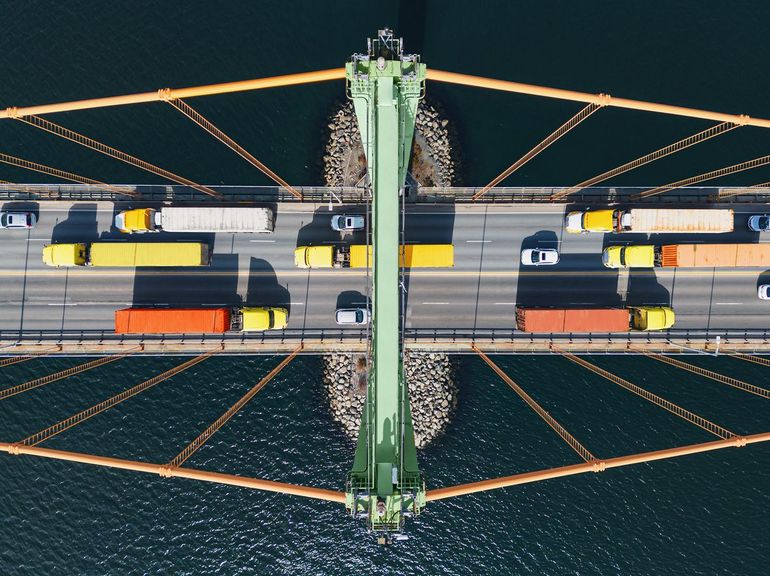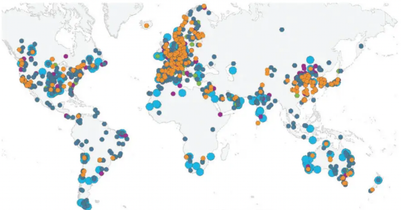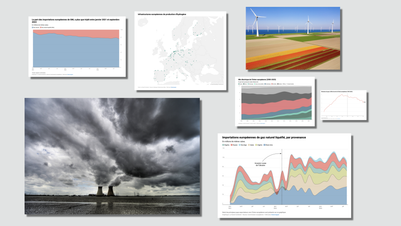working-paper
October 2, 2023
Report: Enabling CO2 standards, a policy toolkit to foster the implementation of AFIR in European Member States
The report was prepared by Hy24 with the contributions of Daimler Truck, Stellantis, Renault, Hyvia, BMW Group, Toyota, Hyundai, Honda, Air Liquide, TotalEnergies, Vinci Concessions, Air Products, Everfuel, Messer, H2Accelerate, Snam, Engie and H2 Mobility to stress the urgency of deploying the HRS network if we are to achieve the ambitious objectives set by AFIR and, more importantly, the decarbonisation targets for the transport sector.

Executive summary
Zero-emission vehicles (ZEVs) will have a central role to play in achieving the requirements set by the Regulation on CO2 Standards to reduce the emissions from heavy duty vehicles by 45% by 2030 (from 2019-2020 levels). Hydrogen vehicles are expected to be a significant percentage of zero-emission heavy duty vehicles manufactured in 2030, as well as a portion of light duty vehicles. To achieve these targets, the mass deployment of hydrogen vehicles must start no later than 2026 in order to give the sector sufficient time to scale up and increase the maturity of the technology and its supply chains. This deployment relies on the pre-existence of a network of large-scale hydrogen refuelling stations (HRS) across Europe, reliably providing hydrogen at an acceptable price.
A strategy for the deployment of HRS must be established for efficient and comprehensive cover of TEN-T networks to fulfil the Alternative Fuels Infrastructure Regulation (AFIR). AFIR stipulates that HRS must be deployed on all urban nodes and every 200 km along the TEN-T core network. Hydrogen Europe have estimated that 657 HRS[1] in EU territory will be required by 2030 to meet AFIR, an extremely tight timeline which requires rapid implementation. A systematic approach to territorial coverage, ‘planification’ of HRS deployment, is the most efficient use of time and financial resources to meet AFIR requirements and achieve CO2 reduction targets. If we want to deploy several hundreds of HRS by 2027 (each Member State will have to set intermediary HRS deployment targets as part of its “national policy framework”), this means that projects must be started in 2025 and that relevant support mechanisms must be in place by 2024. We are already late.
HRS must be deployed before a commercial ramp-up of hydrogen vehicles can be coordinated, which will lead to a short-term underutilisation. To mitigate short-term financial losses, specific support schemes must be implemented during the deployment phase, else the rollout will be delayed, and decarbonisation targets set by the European Commission will be missed. CAPEX grants which have been previously employed for HRS demonstration projects will not be adequate for deployment at this pace and scale. Specific short-term support mechanisms should be implemented to support the anticipated deployment of the HRS network. A ‘Capacity Payment’ mechanism (a fixed rent based on the capacity of the HRS, disbursed over 8-10 years under the condition of continued high performance of the stations) is seen as an optimal solution to remove short-term bottlenecks and enable rapid and comprehensive deployment. Total funding to enable the AFIR network would amount to circa €1.8 billion (discounted value), spread across ten years and covering all EU Member States.
In addition, other financial supports could be used in conjunction with capacity payments to reduce the total amount, such as: mandates on fleets (to incentivise the purchase of ZEVs), transposing RED III (to improve the economics of utilising renewable hydrogen), or directly subsidising hydrogen vehicles (to reduce the total cost of ownership).
For some countries, extra-budgetary tools could be used as an alternative to capacity payments. A small increase in toll price on concessioned motorways would act as a virtual capacity payment (but is restricted to countries where concessioned motorways already exist). Member States could also introduce an obligation for fuel retailers to deploy HRS, which could be offset by increasing slightly the petrol/diesel selling price.
Although significant collective commitments will be required for the rollout of a dense and reliable HRS network, delivery can be achieved by 2030 if a coordinated approach is taken today. As underlined, the implementation of AFIR must start now if we want to reach the ambitious HRS deployment targets set by the European Commission. A collective approach to AFIR implementation – which could materialize in the creation of a public/private working group at EU level – will strongly support the build-up of a comprehensive and reliable HRS network. This will unlock billions of euros of investment in the hydrogen and vehicle supply chains (some of which has already been taken), and enable HRS to be deployed beyond 2030 with a viable business case independent of state support.
[1]Based on Hydrogen Europe’s initial estimates. There are still some uncertainties regarding the interpretation of AFIR and the final number of refuelling stations per country. However, it is essential to underline that AFIR will only represent a minimum target and should not be considered as an end point.

Innovating to finance the hydrogen economy
On the road to a more sustainable economy, we need more investment in sustainable assets. These investments must not only be supported by appropriate regulatory frameworks, but also encouraged and facilitated by financial mechanisms.
More about

Energy Europe – From integration to power
Europe is fragile. It's a fact: it will never have total energy independence. How can we take advantage of this situation? Pierre-Etienne Franc, co-founder and CEO of Hy24, proposes to turn a weakness into a strength - to the benefit of the Union's industrial and foreign policies.
More about

When Hydrogen Becomes a Geopolitical Imperative for France
COP28 made its mark by reaching a consensus on the "call to transition away from fossil fuels", which was accompanied by a call from more than 30 countries to accelerate the development of hydrogen as a means of distributing green energy around the world. Hydrogen is set to account for almost 15% of final energy demand in the coming decades. What does this mean for France? For Europe?
More about
